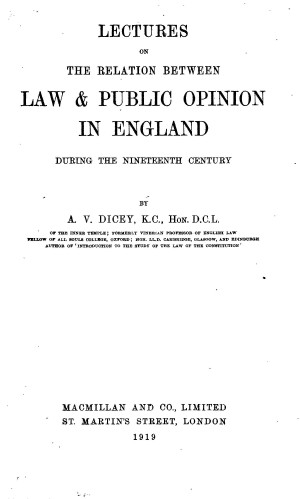
Lectures on the Relation between Law and Public Opinion (2nd ed. 1919)
- Albert Venn Dicey (author)
A series of lectures Dicey gave at Harvard Law School on the rise of collectivism in England during the 19th century and its impact on legislation.

A series of lectures Dicey gave at Harvard Law School on the rise of collectivism in England during the 19th century and its impact on legislation.